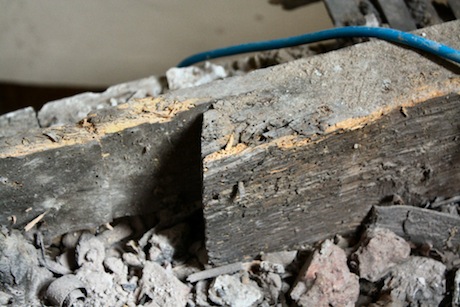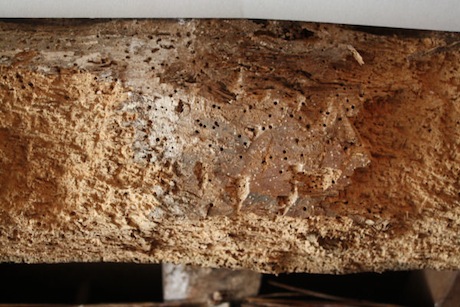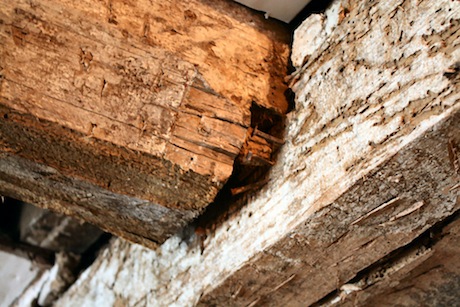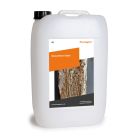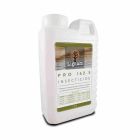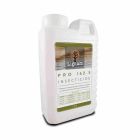Help & Advice Articles, Videos and How-to-Guides
Filter Articles
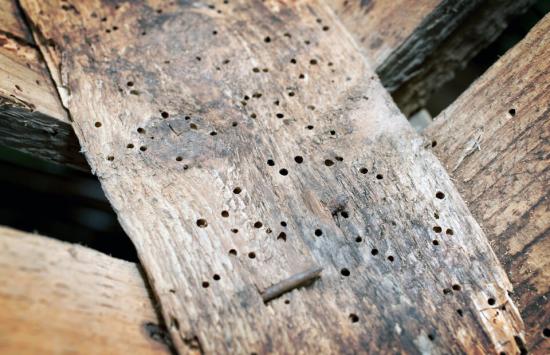
A Complete Guide to Treating Woodworm
Woodworm is a common issue that can impact the timber throughout your property if left untreated. If you’re seeing signs of woodworm in your home, you’re probably concerned about the extent of the issue and what that might mean. Infestations can vary, so it’s important to act fast when you spot the signs.
Treating Woodworm
With woodworm, it’s important to act quickly and use the correct woodworm treatment. To do this, you need to correctly identify the type of wood-boring beetle. Our guide takes you through the different types, identification and ultimately how to get rid of woodworm.
Quick navigation:
- What is woodworm?
- What does a woodworm look like?
- Life cycle of woodworm
- Types of wood boring beetles
- How to identify an active woodworm infestation
- How to tell if woodworm are active?
- Where can you find woodworm?
- What attracts woodworm? (Common furniture beetles)
- Less common species of woodworm and different wood types
- How serious is woodworm infestation
- How to prevent woodworm
- How to get rid of woodworm
- Woodworm treatments
What are Woodworm?
Woodworm is the common term used to refer to the larvae of all wood boring beetles. There are several species found in the UK, but most of the damage is caused by the offspring of the Common Furniture beetle.
What does a woodworm look like?
Woodworm larvae are usually a creamy white colour and have curved bodies. It’s highly unlikely you’ll ever actually see woodworm larvae, as they stay hidden munching away on timber until they are fully-grown. Adult wood boring beetles look different depending on their species: the Common Furniture beetle is a brown winged beetle, typically 3-4mm in length.
Life Cycle of Woodworm
The complete lifecycle of a woodworm takes place over a two-to-five-year period. There are three stages of woodworm development egg laying, hatching/tunnelling, and transformation:
Egg laying phase
The woodworm cycle begins when an adult female wood boring beetle lands on a wooden surface and lays her eggs just under the surface in pores, cracks and crevices. Her aim is to secure the eggs in the safest condition possible to give them the best chance of survival. In any given laying cycle, a female can lay anything between 20-50 eggs in a single batch.
Hatching and tunnelling phase
Within a matter of weeks, the eggs will hatch from the bottom to produce larvae. These small larvae will then burrow their way through the wood for anything between two to five years. Over the course of this time, a single larva will tunnel extensively, which is how large batches of the creatures can seriously damage structural integrity.
Transformation
As time passes, the larva begins to mature and will tunnel its way towards the surface and create a “pupil chamber”. This small room acts as a final staging area where the larva can rest and begin its transformation into an adult beetle. When the time is right, the newly transformed beetle will bore its way to the surface and fly away, ready to mate with a female and restart the process.
Types of Wood Boring Beetles
Some of the most common wood boring beetles are: Common Furniture beetles, Deathwatch beetles, House Longhorn beetles and Powder Post beetles.
What are the signs of woodworm infestation?
It can be tricky to tell if you have an active woodworm infestation as the main damage is caused inside the timber and you’re unlikely to see any visible results for years. However, there are several telltale signs that can help you identify a potential woodworm infestation:
- Small round holes in your woodwork, typically 1mm to 2mm in diameter
- Fine, powdery dust around these holes (known as frass)
- Crumbly edges to boards and joists
- Tunnels within the timber
- Weak or damaged timbers or flooring
Additional woodworm infestation signs:
Above are some of the main signs of a woodworm infestation, but there are a few others to look out for:
Dead woodworm beetles around windowsills
During the summer months (woodworm season is May to October), you may also spot adult wood boring beetles emerging from holes within the timber. Once a wood boring beetle has chewed itself out of hiding, it instinctively heads for light. So, check for live or dead beetles around a suspected woodworm infestation and on the windowsills.
Presence of predatory beetles
Steely Blue beetles are the main predators of the Common Furniture beetle, so if you see them wandering around it’s probably because they’ve found a good food source close by.
Signs of beetle frass
Exit holes are probably the most obvious sign, but they do not occur until the adult beetles are ready to leave the timber, years after hatching as woodworm larvae. So it’s good practice to look for signs of frass on the back or underside of old furniture.
Finding holes and frass on your furniture or flooring isn’t always a cause for concern, they might just be signs of a previous woodworm infestation which has long been dormant. If you are unsure, it’s best to consult a woodworm specialist.
How to tell if woodworm are active
Judging whether the damage you’ve found is an active woodworm infestation or not is always the hard part.
One popular method for testing for an active woodworm infestation is filling the exit holes with beeswax or tissue paper, leaving it for a year and seeing if any adult beetles bore through in the next year. Whether or not you give this a go, it’s always best to talk to a specialist before going ahead with any treatment.
Where You Can Find Woodworm
Woodworm can be found in all manners of wood surfaces including:
- Floorboards
- Furniture
- Joists/beams
- Roof timbers
- Painted wooden surfaces
- Wooden tools
- Joinery and structural timbers
- Decorative woodwork
- Musical instruments
What Attracts Woodworm?
Different species of wood boring beetles like different types of wood. Some prefer softwoods like pine, spruce and cedar. While others prefer hardwoods such as oak, ash and mahogany. All wood boring beetles like wood that is damp, because it’s easier to chew!
Damp wood
The Common Furniture beetle can be found in both softwoods and hardwoods. Though it has been found in many places, it generally prefers damp floorboards and loft timbers.
Female Furniture beetles tend to choose hardwoods with a moisture content of 28% or higher to give their larvae the best chance of pupating into adults. However, woodworm can be found living in timber down to 12% moisture content. The dryer the wood gets the harder it becomes for them to feed.
Unprotected wood
Unprotected wood with little to no lacquer or protective finish is preferred by wood boring insects like woodworm. This is because exposed wood without varnish is more likely to be kinked, rough and therefore easy to nestle eggs into from a hatching perspective. Secondly, the lack of a sealant protection means that it’s easy for a newly-hatched larvae to quickly bore through the grain.
What woods do woodworm dislike?
Common Furniture larvae will only eat the outer section or ‘sapwood’ of a tree. This is because it has more nutrients and is toxin-free, unlike the inner ‘heartwood’ of timbers like pine and oak. If your furniture is made from good quality heartwood, you are at much lower risk of getting a woodworm infestation. Sapwood is normally lighter than heartwood so you can spot where the high-risk areas are.
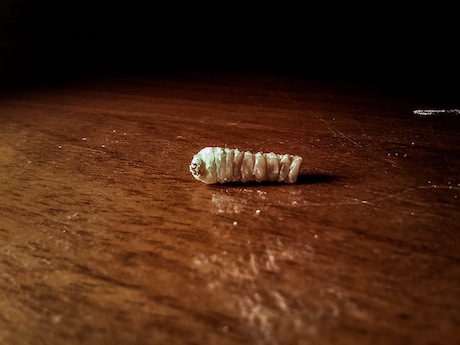
Woodworm Grub by Dazzo
Less Common Species of Woodworm and Different Wood Types
Although the furniture beetle is the most commonly found species of wood boring insect in the UK, there are also several other species to watch out for. Being mindful of different species is important as they have different damage capabilities and prefer different timbers.
Deathwatch beetles
Deathwatch beetles prefer hardwoods such as Oak, Elm and Mahogany that have been softened by fungal decay. These are most often found in older buildings and antique furniture. These beetles are most common in central and southern England. They are known for the distinctive tapping noise the adult beetles make when attracting a mate.
House Longhorn beetles
House Longhorn beetles are mainly found in the southeast of England, and are particularly common in northwest Surrey. The House Longhorn beetle is the most damaging wood boring insect. It attacks the sapwood of dry softwood and grows up to 30mm long. They leave exit holes of up to 10mm in diameter.
These beetles love partly seasoned softwoods including pine, spruce and fir, and are most commonly found in roof timbers. Larvae produce large quantities of frass containing small pellets, which leave a blistered appearance on the surface of the wood. The larvae can seriously damage timber within their growth period, destroying the sapwood and leaving only the veneer.
How serious is woodworm infestation?
The extent of damage caused depends on the species, the size of the infestation, and what has been infested. Not all woodworm is harmful. However, if left untreated over time, woodworm can seriously weaken timber, causing severe damage within its structure.
At this point, weakened structural components could give way, resulting in a large repair expense or at worse, serious injury. It is for this reason that a woodworm infestation is a significant issue if found in:
- Timber joists
- Load-bearing wood
- Roofing
- Rafters
- Structural timber
As mentioned, there are many factors in determining the impact and extent of an infestation and this needs to be confirmed by a professional before any action is taken.
How to prevent woodworm
Though it’s difficult to keep woodworm out completely, you can definitely make your home less appealing to them by:
- Keeping all wood dry - The wetter wood becomes, the easier it will be for larvae to bore through and live in it. Female wood beetles want to give their offspring the best chance of survival so will select a wooden surface with this in mind.
- Keeping your home heated and well-ventilated - Heating your home to an adequate temperature while keeping it ventilated will reduce the chance of moisture buildup and saturation of wood.
- Buying furniture made from good quality hardwood - Hardwood is known for being most resistant to woodworm infestation due to its density and lack of nutrients for woodworm larvae to live off.
- Sealing wood with varnish - Varnish makes it harder for wood boring insects to penetrate a wooden surface. It is also toxic. Try to re-varnish or seal any surfaces that have worn away over time.
- Carefully checking for signs of woodworm when purchasing antique or second-hand furniture - Always check that you are not bringing anything infested into your home, checking for the telltale signs described above.
- Removing infected wood from your home - If you find out that a piece of timber is infested, remove it at once if possible.
- Replacing infected timbers - Once infected timber has been removed, be sure to replace it with new timber that is suitably prepared with a protective finish and treated.
- Treat the timber with a woodworm treatment - take the proactive step to prevent infestation and treat timber with a woodworm killer.
- Using flytraps - Flytraps can be used in a preventative strategy to catch and contain adult wood boring beetles before they have a chance to mate.
How to get rid of woodworm
Before treating any kind of woodworm, it’s extremely important to correctly identify the type of woodworm you’re dealing with. If you are unsure, it’s always best to consult a specialist.
Surface treatments
If your woodworm problem only affects small items such as furniture, you can treat it effectively yourself using the right techniques and treatments.
You can easily treat Common Furniture beetles with a brush, dip or spray application of a Permethrin-based concentrated woodworm treatment on all timbers affected by woodworm. As a precaution you should also treat any close by timbers to protect against future outbreaks. Don’t forget to re-paint and re-varnish treated surfaces when they are dry.
Injection treatments
Death Watch beetle infestations occur deep within timber, so it is essential to treat by injection as well as a surface treatment. This can be done by injecting woodworm treatment spray into the exit holes left by the adult beetles. Or it can be done by drilling into the danger zone and filling the wood with a paste or gel woodworm treatment. The larvae of the Death Watch beetle often cause more harm than the Common Furniture beetle, so it’s good to check with a professional before going ahead with any treatment.
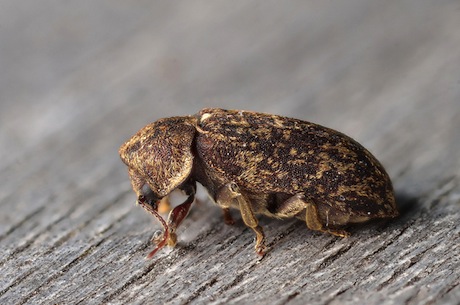
Death Watch Beetle by Gilles San Martin
If you suspect you have a House Longhorn woodworm infestation, it’s always best to consult a specialist. All timber within the building will need to be treated and inspected for its structural integrity. If your timber is free from severe structural damage and the infestation is minor, it may be safe to go ahead and tackle it with the same treatments and methods you would use to treat Death Watch beetles. But you must be very careful with this species of woodworm.
A professional should treat any severe infestations that have caused extensive damage.
Woodworm in floorboards
Woodworm can infest any timber in your home - including your floorboards. If the issue persists your floorboards will become weak and may even break.
If you think you have woodworm in your floorboards, then there are ways to sort the issue quickly. However, before tackling the problem, you should consult a professional for a proper diagnosis. Woodworm needs specialist treatment to effectively remove it from your home, and an expert will be able to provide next steps, depending on the type of woodworm you have.
How you treat woodworm in floorboards depends on how widespread the woodworm is. As mentioned earlier, you can use surface treatments such as our Woodworm Killer or Lignum Insecticide Pro. If the woodworm is buried deep in your floorboards, then you’ll need to inject gel treatment into the holes left by the insects. And remember, you’ll need to treat each side of the floorboards, meaning that you may need to take up your flooring completely.
Again, the method you use for treating woodworm in floorboards all depends on the extent of the issue, as well as the type of insect causing it. You’ll also want to check any other exposed timber in your home, such as furniture, to ensure it hasn’t been affected.
Once the treatment has been applied, we recommend implementing the preventive measures included earlier in this guide to ensure the woodworm doesn’t come back.
Woodworm Treatments
Permagard Woodworm Killer (Ready to use) is perfect for treating woodworm caused by Common Furniture beetles. It contains Permethrin, which is effective against all the life stages of wood boring insects. Other treatments can only target one life stage.
Our ready to use woodworm killer has been specifically designed to protect furniture, flooring, structural and other timbers. It is designed to be rapidly absorbed into the wood giving higher levels of penetration. It is odourless and can be applied either by brush or low-pressure spray to give long lasting protection. And at just £16 (ex. VAT) for five litres, you save over a third when you buy our ready to use Woodworm Killer online.
Lignum Insecticide Pro is great for treating Death Watch Beetle. Once diluted in water, this high-strength concentrate offers long lasting protection preventing further re-infestation. When injecting timber, Lignum Dual Purpose Timber Gel offers deeper penetration than liquids ensuring maximum protection. Always check with a specialist if you are unsure which method to use.
Click here to view our full range of woodworm treatments, and please give our experts a call on 0117 982 3282 if you have any further questions about treating woodworm.
Read more in How to Restore Woodworm-Infested Antique Furniture.
